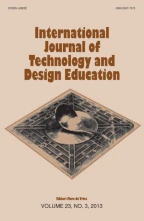Abstract
The purpose of this study is to identify the occurrence of Sudden Moments of Inspiration (SMI) in the sketching process of industrial design through experiments to explain the effect of sub consciousness on SMI. There are a pre-experiment and a formal experiment. In the formal experiment, nine undergraduates majoring in industrial design with same education experience were selected to receive a design task. In the task, nine undergraduates were divided into three groups randomly by lot. While two groups received A or B subliminal suggestions through a slide picture presentation, the other one group was not. The design processes and sketches of the three groups were recorded and analyzed, using concurrent and scientifically experimental methods such as real-time videos and protocol interviews. Comparison of the three experiments provided convincing evidences of the effect of sub consciousness on SMI in the sketching process of industrial design.
Similar content being viewed by others
Explore related subjects
Discover the latest articles, news and stories from top researchers in related subjects.References
Akin, ö, & Akin, C. (1996). Frames of reference in architectural design: Analyzing the hyper acclamation (Aha-!). Design Studies, 17(4), 341–361.
Bijl, A. (1985). An approach to design theory . Design theory for CAD. 3–31.
Cross, N. (2001). Design cognition: Results from protocol and other empirical studies of design activity. In C. Eastman, M. McCracken, & W. Newstetter (Eds.), Design knowing and learning: Cognition in design education (pp. 79–103). Oxford: Elsevier.
Dijksterhuis, A, Aarts, H & Smith, P. K. (2005) The power of the subliminal: On subliminal persuasion and other potential applications. The New Unconscious, 77.
Gao, S., & Kvan, T. (2004). An analysis of problem framing in multiple settings. Design Computing and Cognition, 4, 117–134.
Goldschmidt, G. (1995). The designer as a team of one. Design Studies, 16(2), 189–209.
Knoblich, G., & Oellinger, M. (2006). The eureka moment. Scientific American Mind, 17(5), 38–43.
Kounios, J., & Beeman, M. (2009). The Aha! moment: The cognitive neuroscience of insight. Current Directions in Psychological Science, 18(4), 210–216.
Mayer, R. E. (1995). the search for insight Grapp ling with Gestalt psychology’s unanswered questions. In R. J. Sternberg & J. E. Davidson (Eds.), The nature of insight (pp. 3–32). Cambridge: MIT Press.
Rodgers, P. A., Green, G., & McGown, A. (1998). Visible ideas: information patterns of conceptual sketch activity. Design Studies, 19(4), 431–453.
Smith, S. M., Linsey, J. S., & Kerne, A. (2011). Using evolved analogies to overcome creative design fixation. In Design creativity 2010 (pp. 35–39). London: Springer.
Suwa, M., & Tversky, B. (1997). What do architects and students perceive in their design sketches? A protocol analysis. Design Studies, 18(4), 385–403.
Thompson, R. A., & Zamboanga, B. L. (2004). Academic aptitude and prior knowledge as predictors of student achievement in introduction to psychology. Journal of Educational Psychology, 96(4), 778–784.
Author information
Authors and Affiliations
Corresponding author
Rights and permissions
About this article
Cite this article
Wu, Q., Wang, Y. To explore the effect of sub consciousness on Sudden Moments of Inspiration (SMI) in the sketching process of industrial design. Int J Technol Des Educ 25, 563–584 (2015). https://doi.org/10.1007/s10798-015-9326-z
Accepted:
Published:
Issue Date:
DOI: https://doi.org/10.1007/s10798-015-9326-z
